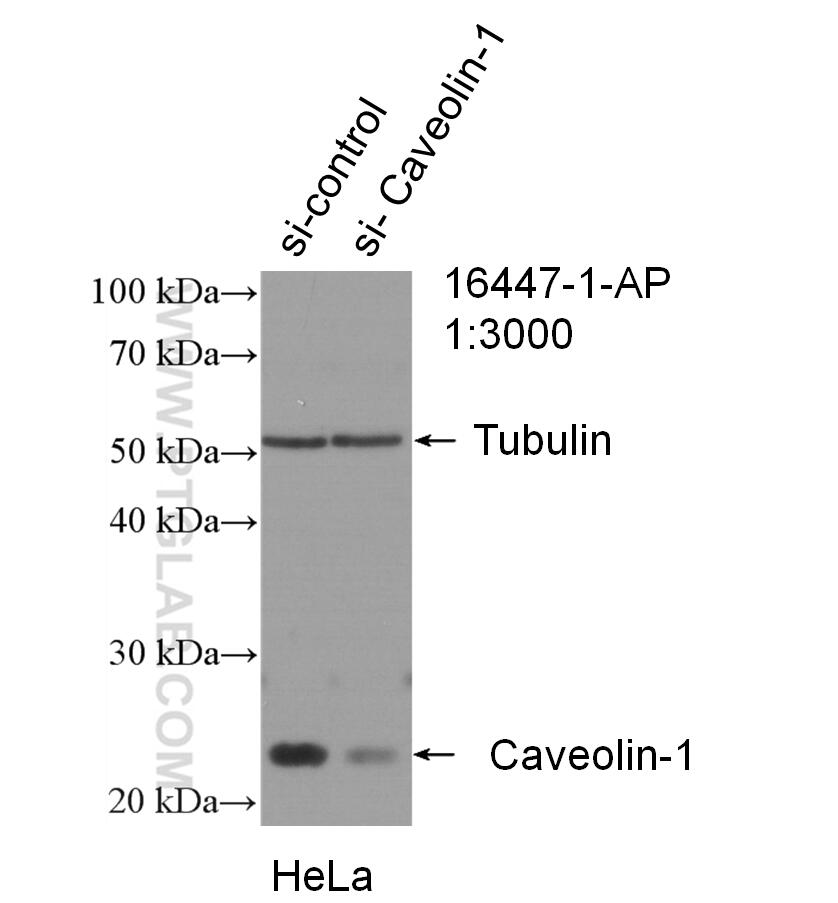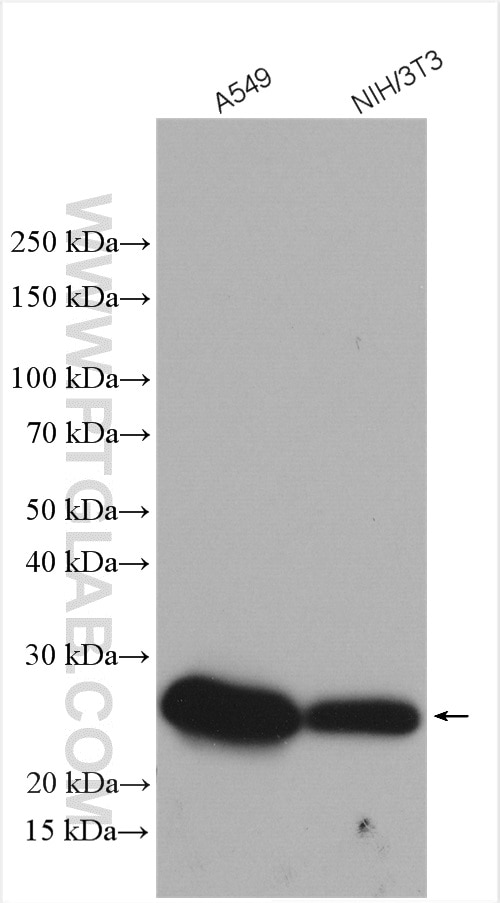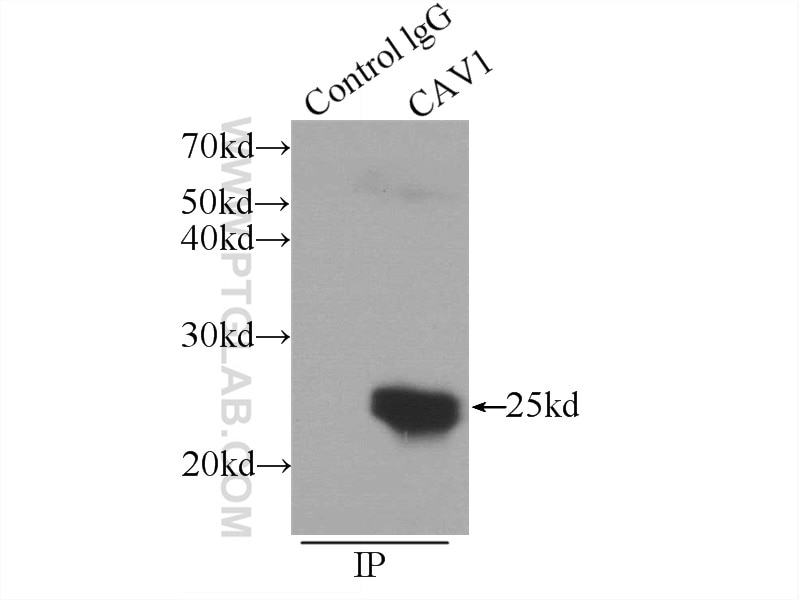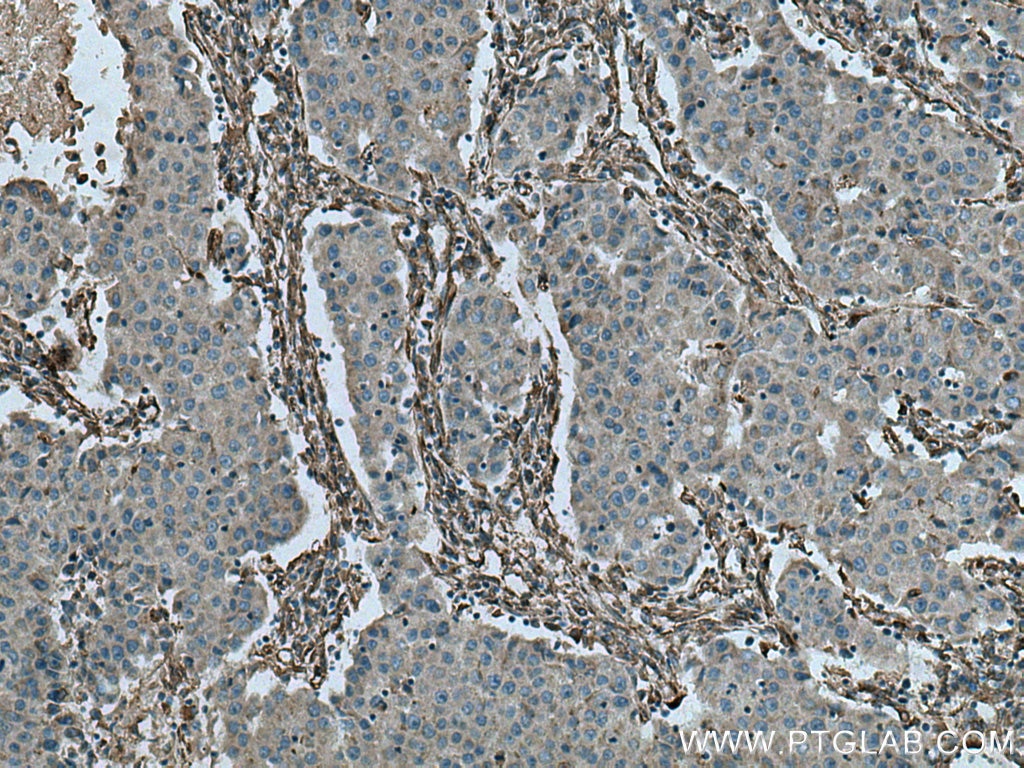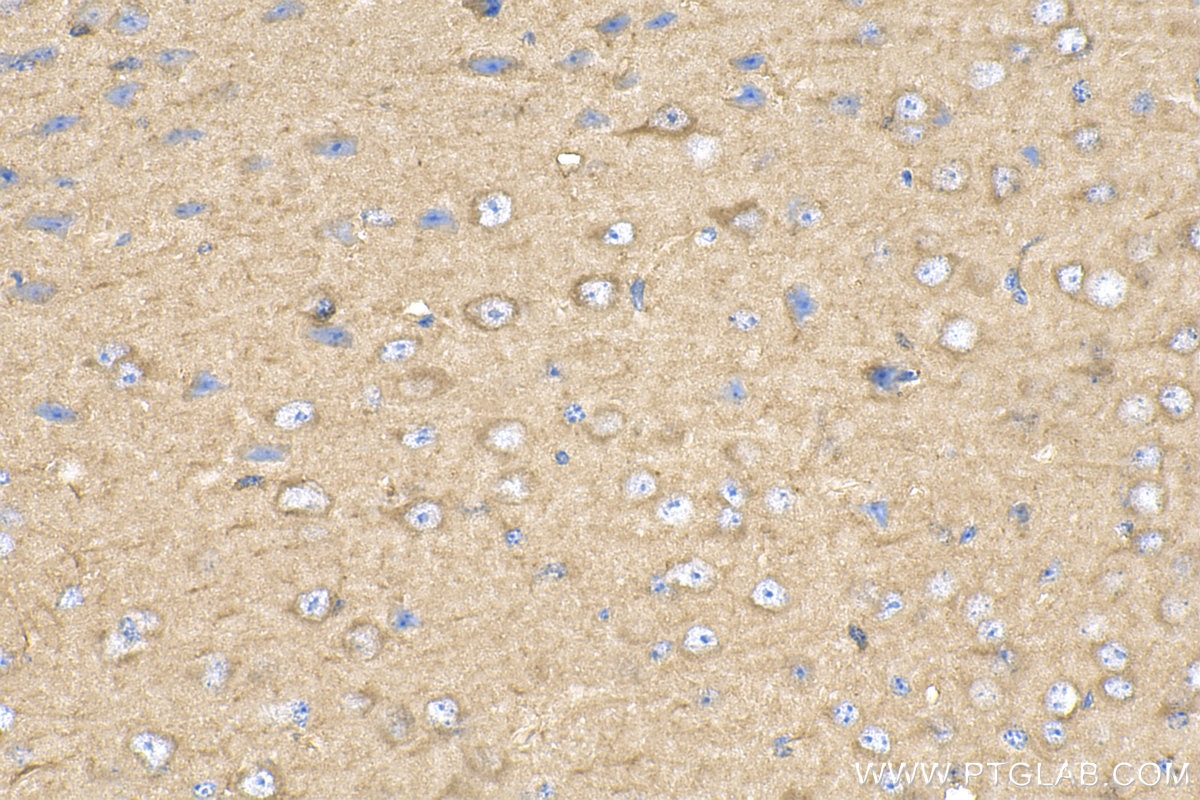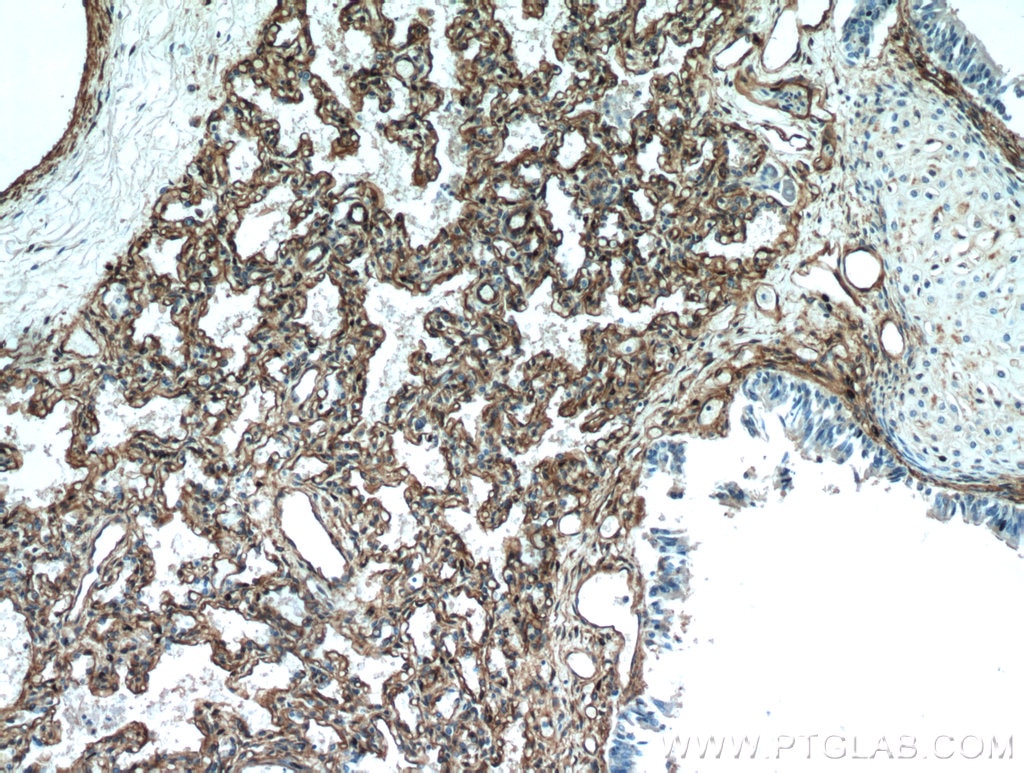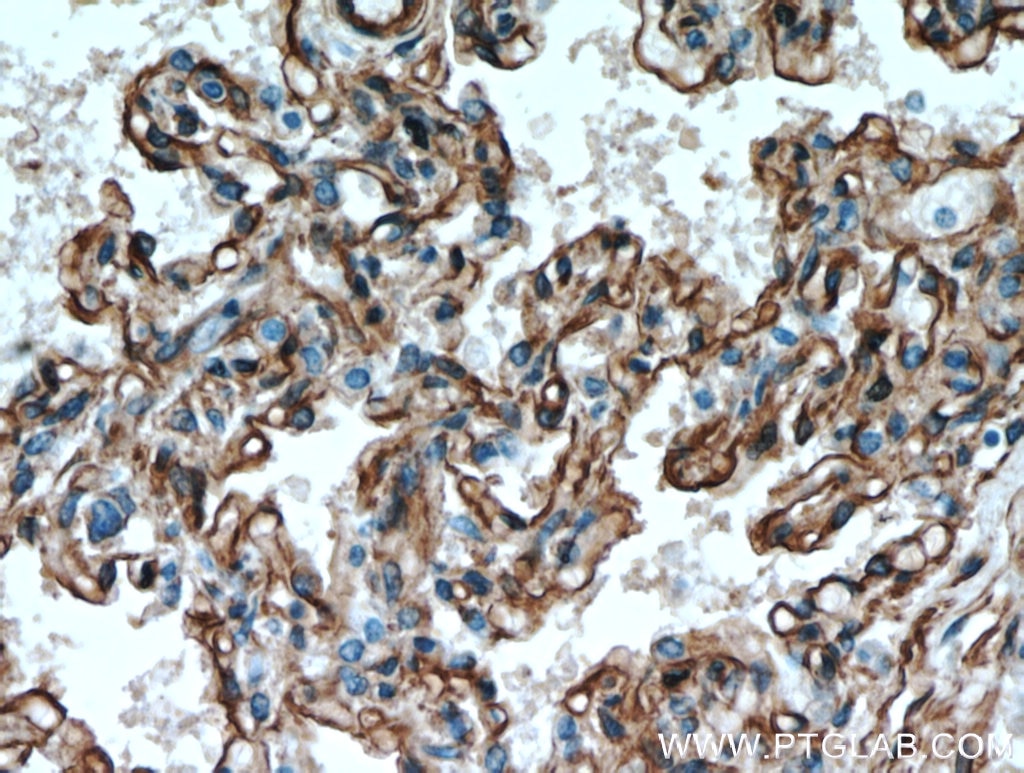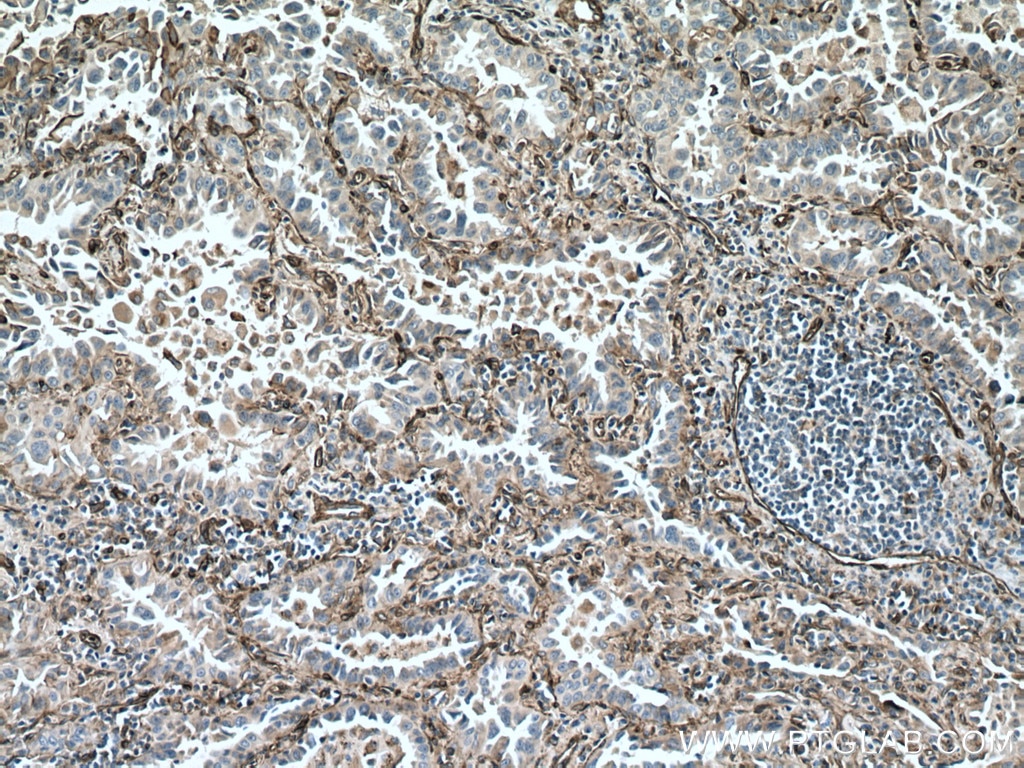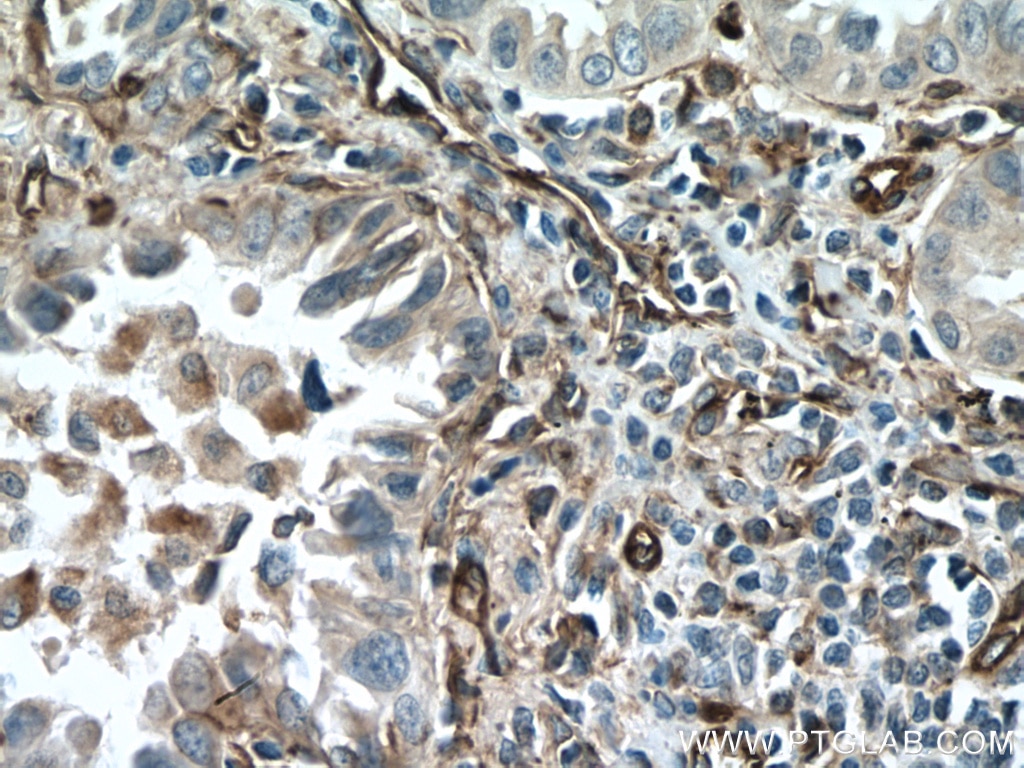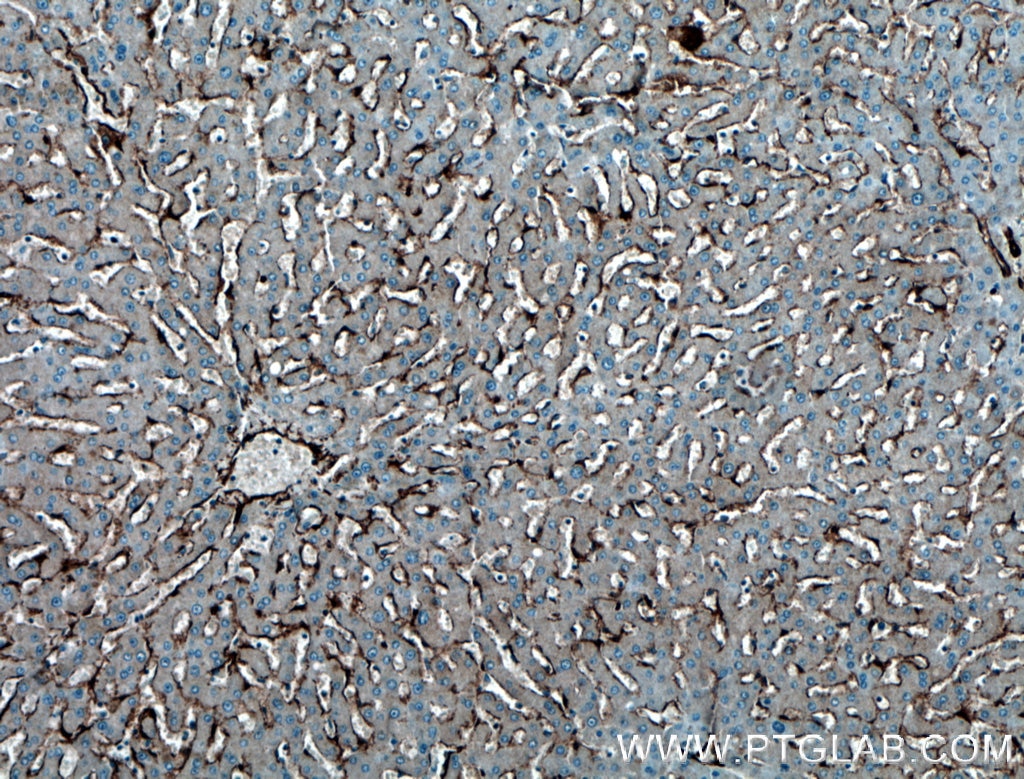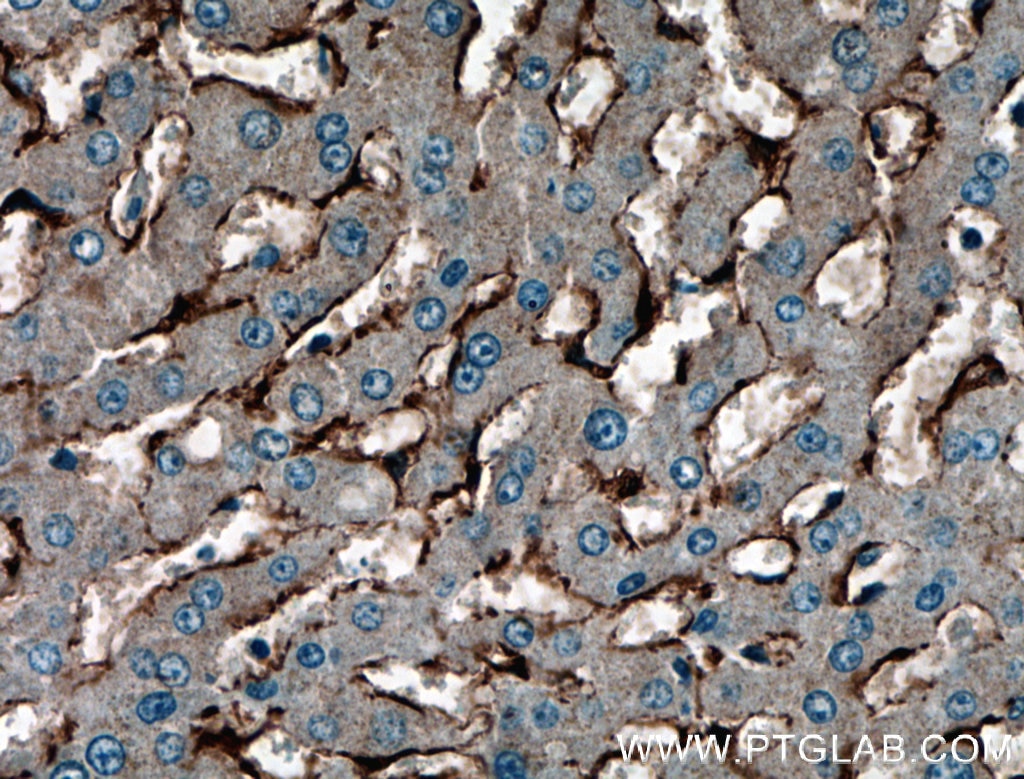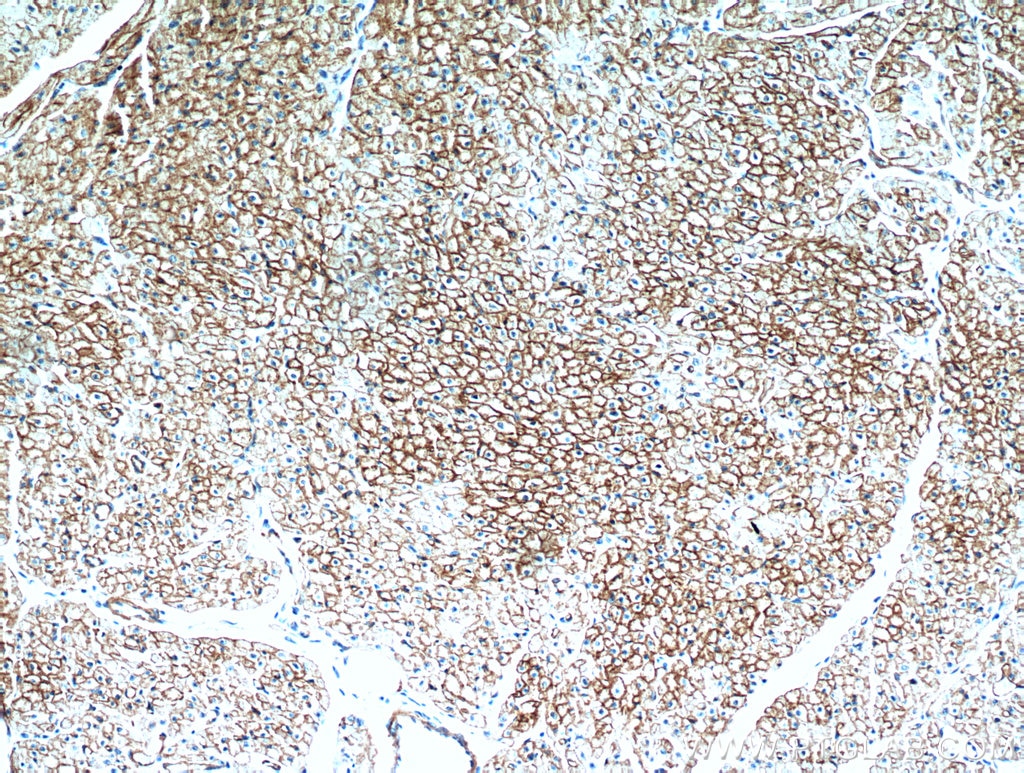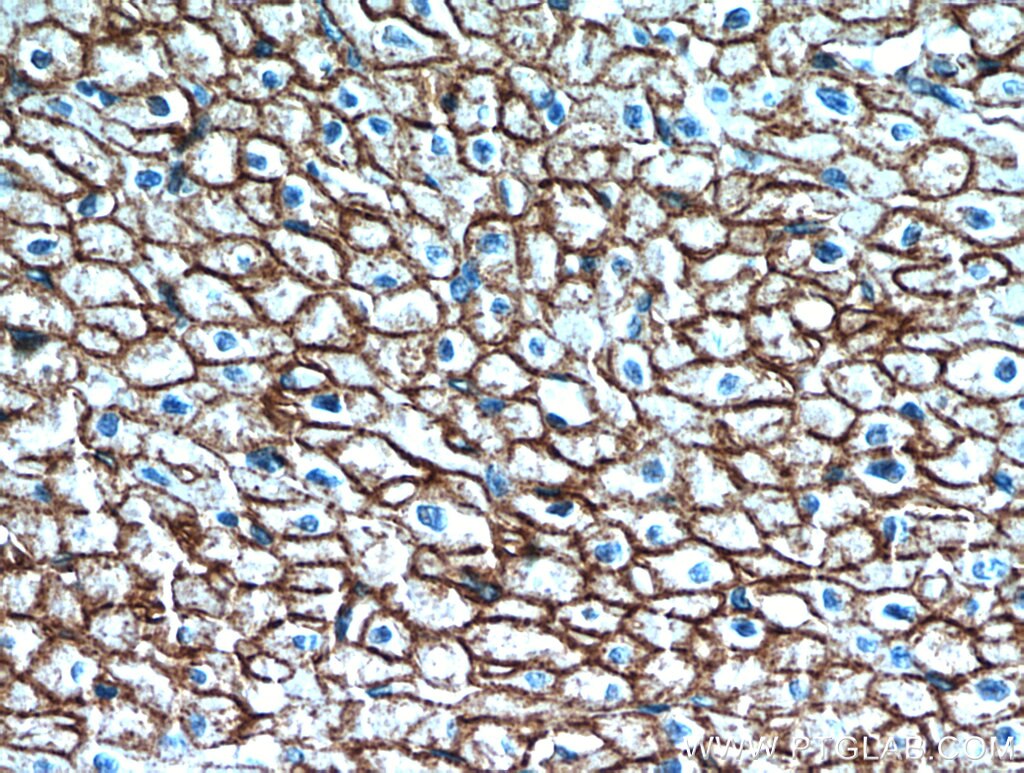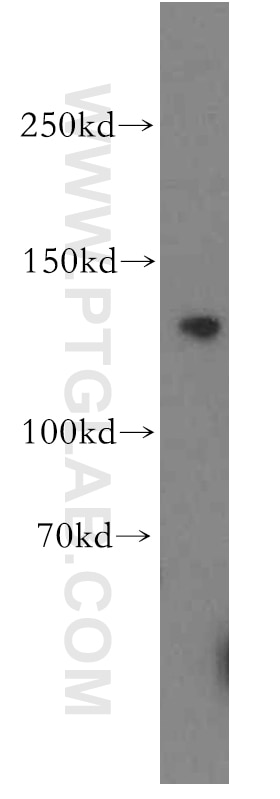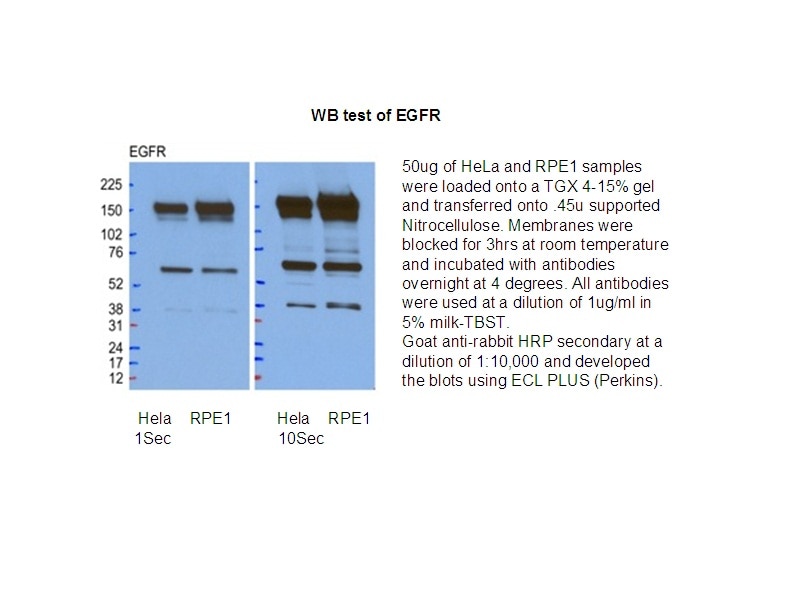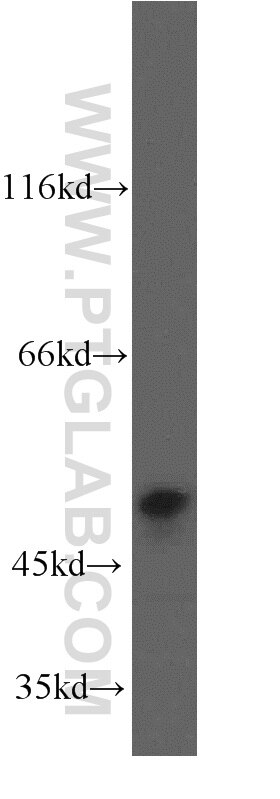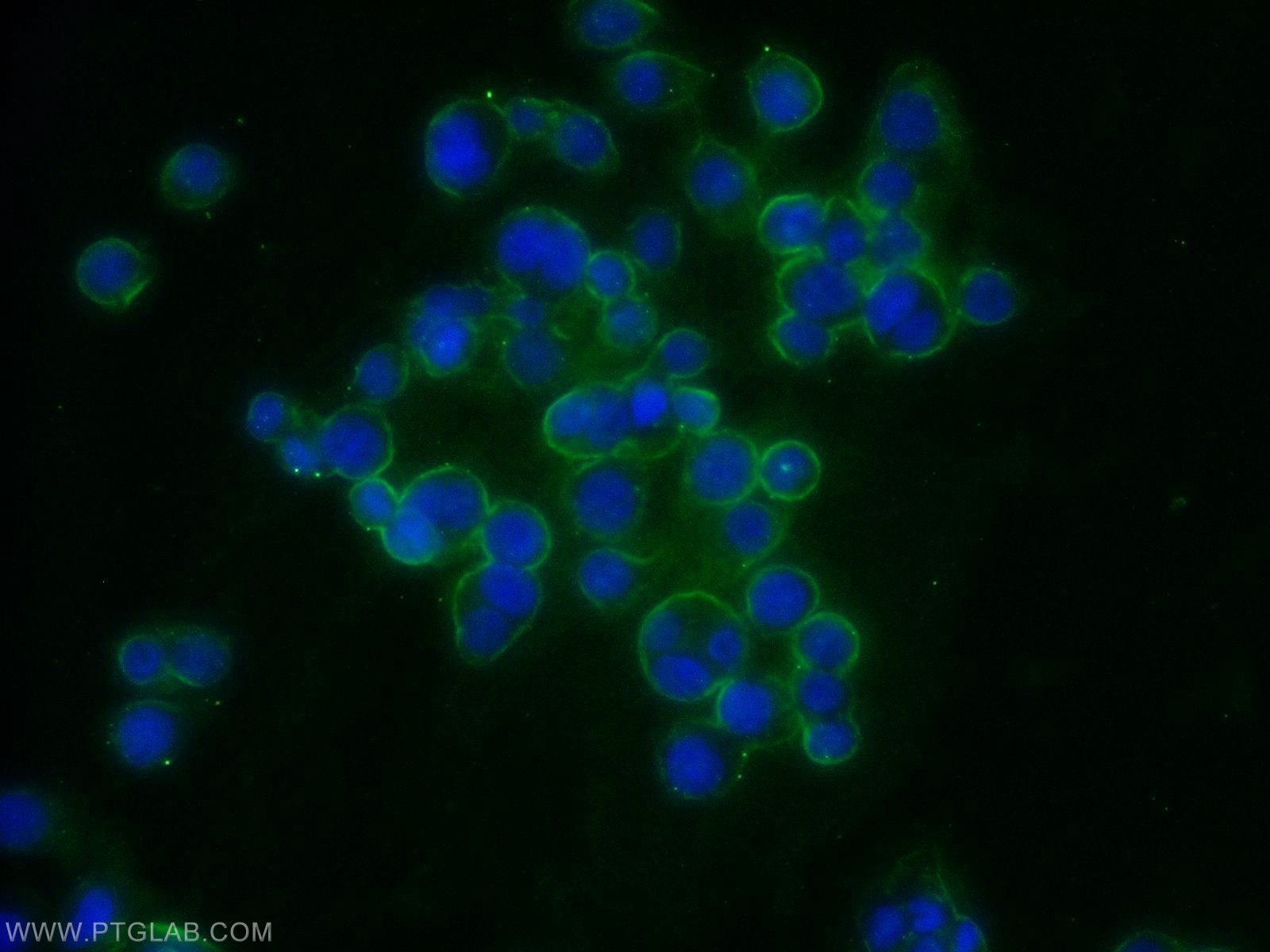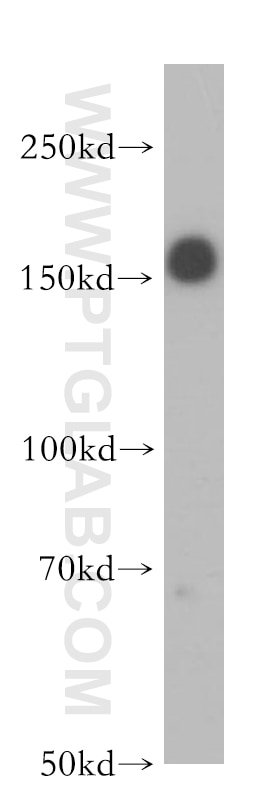- Phare
- Validé par KD/KO
Anticorps Polyclonal de lapin anti-Caveolin-1
Caveolin-1 Polyclonal Antibody for WB, IP, IHC, ELISA
Hôte / Isotype
Lapin / IgG
Réactivité testée
Humain, rat, souris et plus (3)
Applications
WB, IP, IF, IHC, ELISA
Conjugaison
Non conjugué
N° de cat : 16447-1-AP
Synonymes
Galerie de données de validation
Applications testées
| Résultats positifs en WB | cellules A549, cellules HeLa, cellules NIH/3T3 |
| Résultats positifs en IP | cellules A549 |
| Résultats positifs en IHC | tissu de cancer du sein humain, tissu cardiaque humain, tissu cérébral de souris, tissu de cancer du poumon humain, tissu hépatique humain, tissu pulmonaire humain il est suggéré de démasquer l'antigène avec un tampon de TE buffer pH 9.0; (*) À défaut, 'le démasquage de l'antigène peut être 'effectué avec un tampon citrate pH 6,0. |
Dilution recommandée
| Application | Dilution |
|---|---|
| Western Blot (WB) | WB : 1:500-1:2000 |
| Immunoprécipitation (IP) | IP : 0.5-4.0 ug for 1.0-3.0 mg of total protein lysate |
| Immunohistochimie (IHC) | IHC : 1:50-1:500 |
| It is recommended that this reagent should be titrated in each testing system to obtain optimal results. | |
| Sample-dependent, check data in validation data gallery | |
Applications publiées
| KD/KO | See 13 publications below |
| WB | See 70 publications below |
| IHC | See 14 publications below |
| IF | See 19 publications below |
| IP | See 4 publications below |
Informations sur le produit
16447-1-AP cible Caveolin-1 dans les applications de WB, IP, IF, IHC, ELISA et montre une réactivité avec des échantillons Humain, rat, souris
| Réactivité | Humain, rat, souris |
| Réactivité citée | rat, bovin, canin, Humain, poisson-zèbre, souris |
| Hôte / Isotype | Lapin / IgG |
| Clonalité | Polyclonal |
| Type | Anticorps |
| Immunogène | Caveolin-1 Protéine recombinante Ag8049 |
| Nom complet | caveolin 1, caveolae protein, 22kDa |
| Masse moléculaire calculée | 22 kDa |
| Poids moléculaire observé | 20-25 kDa |
| Numéro d’acquisition GenBank | BC006432 |
| Symbole du gène | CAV1 |
| Identification du gène (NCBI) | 857 |
| Conjugaison | Non conjugué |
| Forme | Liquide |
| Méthode de purification | Purification par affinité contre l'antigène |
| Tampon de stockage | PBS avec azoture de sodium à 0,02 % et glycérol à 50 % pH 7,3 |
| Conditions de stockage | Stocker à -20°C. Stable pendant un an après l'expédition. L'aliquotage n'est pas nécessaire pour le stockage à -20oC Les 20ul contiennent 0,1% de BSA. |
Informations générales
Caveolin-1 (CAV1), a multifunctional protein, is the main constituent molecule of caveolae and represents a scaffolding molecule for several signaling molecules including epidermal growth factor receptor (PMID: 19641024). Several studies have implicated that a reduced expression of CAV1 was found in cancers including head and neck carcinoma (PMID: 19002186). However, other studies recognize CAV1 as a tumor promoter because CAV1 is overexpressed in various kinds of cancers, especially in oral cancer (PMID: 20558341). Recent study also show that CAV1 is involved in astric Cancer (PMID: 25339030). MW of Caveolin-1 is from 20-25 kDa due to phosphorylation (PMID: 10198051).
Protocole
| Product Specific Protocols | |
|---|---|
| WB protocol for Caveolin-1 antibody 16447-1-AP | Download protocol |
| IHC protocol for Caveolin-1 antibody 16447-1-AP | Download protocol |
| IP protocol for Caveolin-1 antibody 16447-1-AP | Download protocol |
| Standard Protocols | |
|---|---|
| Click here to view our Standard Protocols |
Publications
| Species | Application | Title |
|---|---|---|
Nucleic Acids Res Nucleosomes enter cells by clathrin- and caveolin-dependent endocytosis. | ||
Dev Cell Vangl2 limits chaperone-mediated autophagy to balance osteogenic differentiation in mesenchymal stem cells. | ||
Redox Biol Selenoprotein K contributes to CD36 subcellular trafficking in hepatocytes by accelerating nascent COPII vesicle formation and aggravates hepatic steatosis | ||
Biomaterials Combination antitumor immunotherapy with VEGF and PIGF siRNA via systemic delivery of multi-functionalized nanoparticles to tumor-associated macrophages and breast cancer cells. | ||
Small Smart Carbon Nanotubes with Laser-Controlled Behavior in Gene Delivery and Therapy through a Non-Digestive Trafficking Pathway. |
Avis
The reviews below have been submitted by verified Proteintech customers who received an incentive forproviding their feedback.
FH Sammy (Verified Customer) (01-20-2024) | Excellent antibody for use by western blotting. Diluted in 3% BSA PBST.
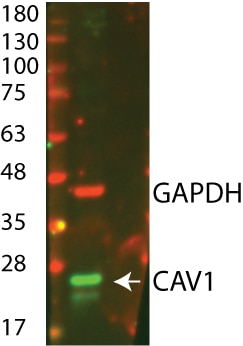 |
FH Priya (Verified Customer) (06-21-2023) | Used this antibody for Caco2 cells andmice tissue
|
FH Priya (Verified Customer) (06-21-2023) | Used this antibody for Caco2 cells andmice tissue
|
FH Priya (Verified Customer) (04-17-2023) | Used for Caco2 cells
|
FH Priya (Verified Customer) (04-17-2023) | Used for Caco2 cells
|
FH Emma (Verified Customer) (03-15-2022) | Works really well @ 1:1000 for WB in PC3 and DU145 cells. Single band seen.
|
FH Kushal (Verified Customer) (08-09-2021) | We tried to use the antibody at high concentrations of 1:100, yet we do not get bands in our blots.
|
